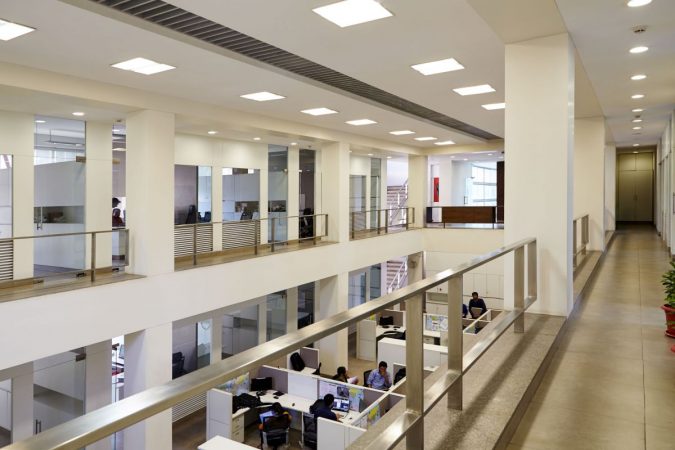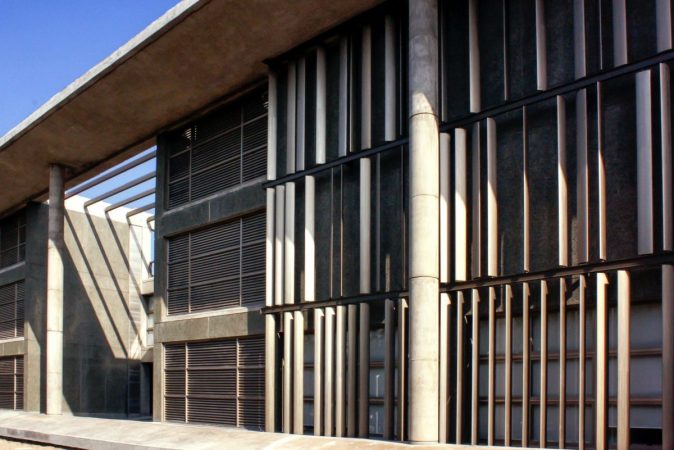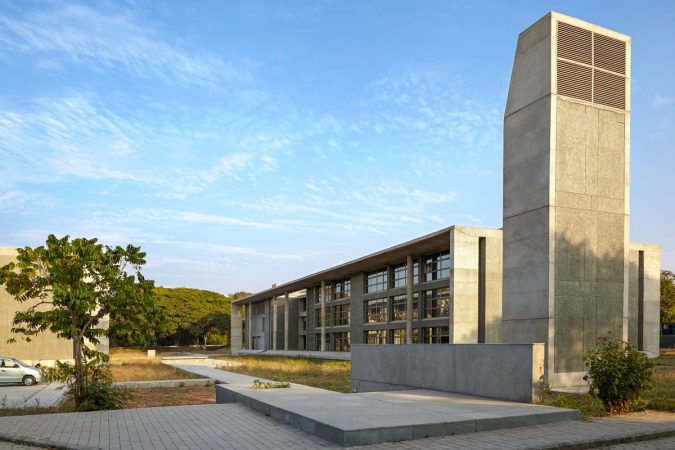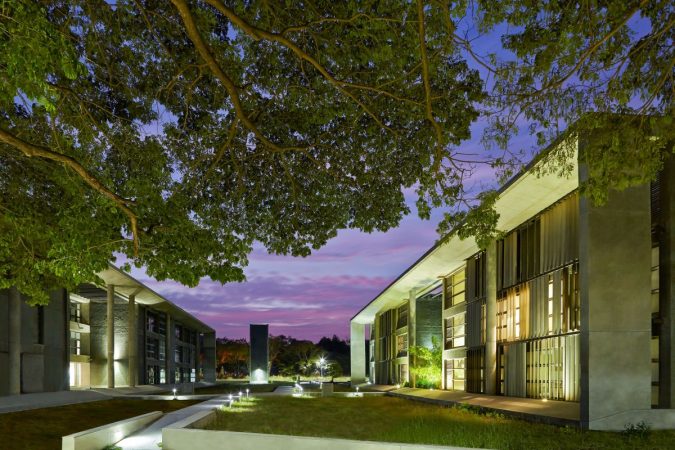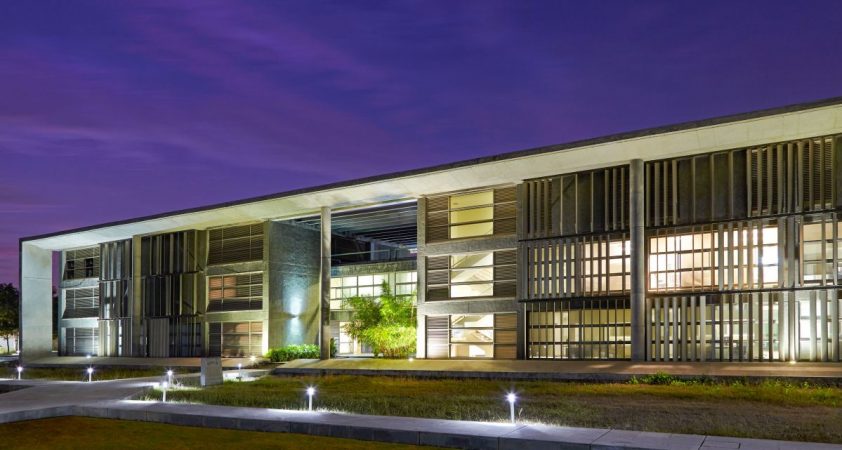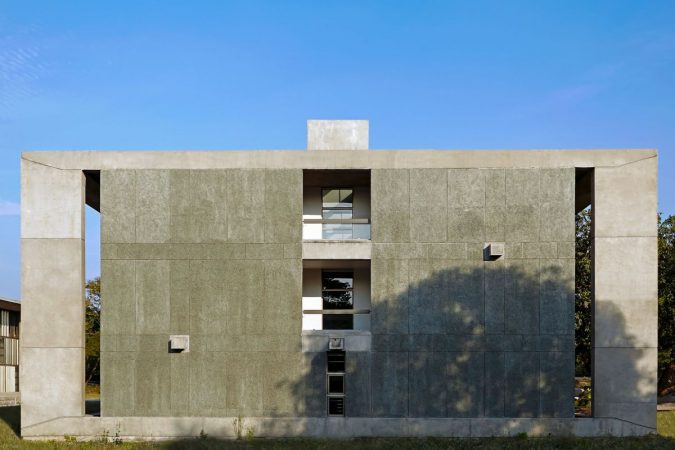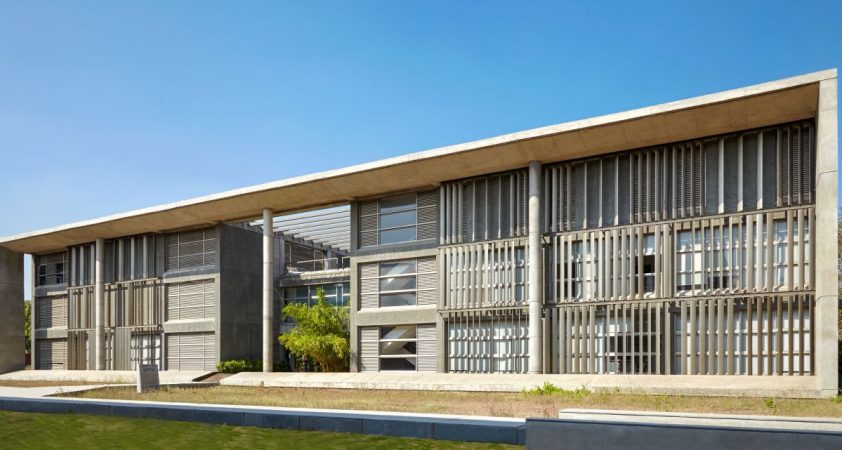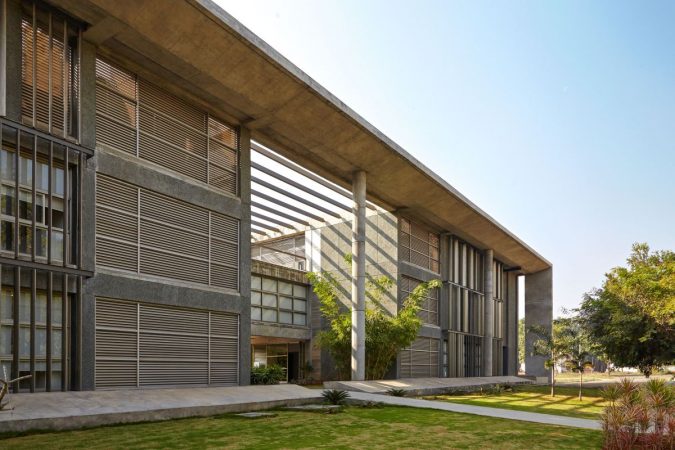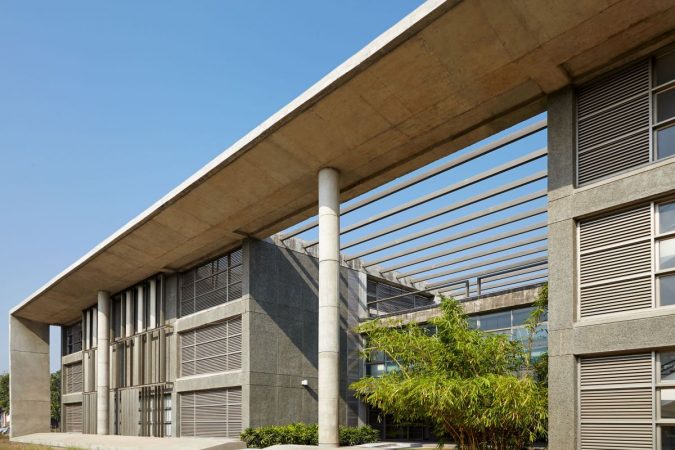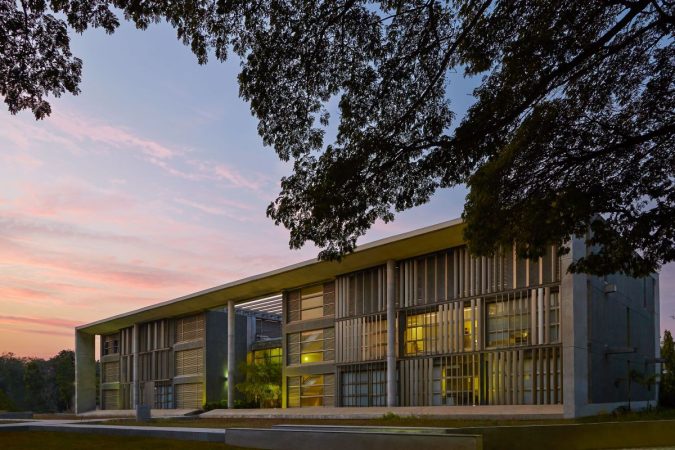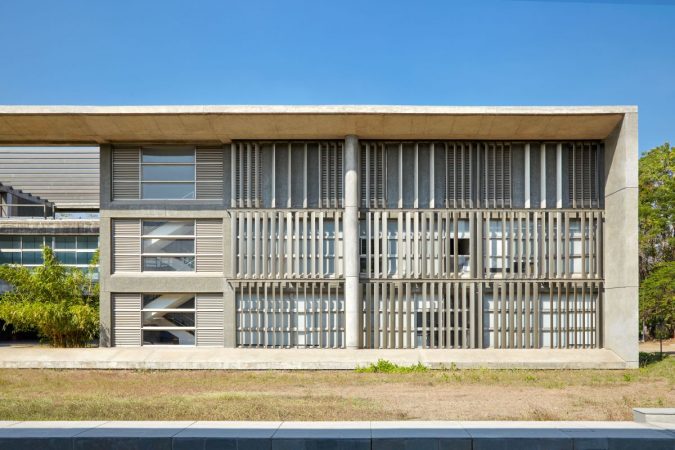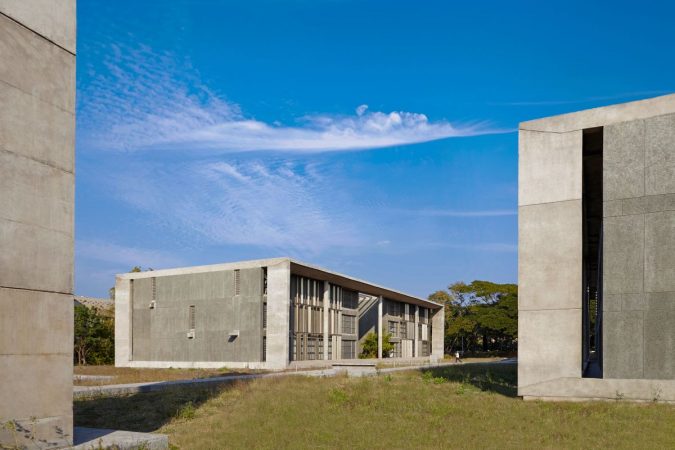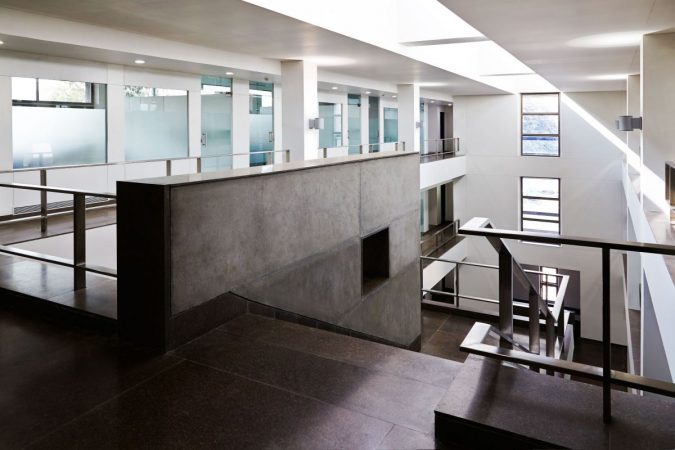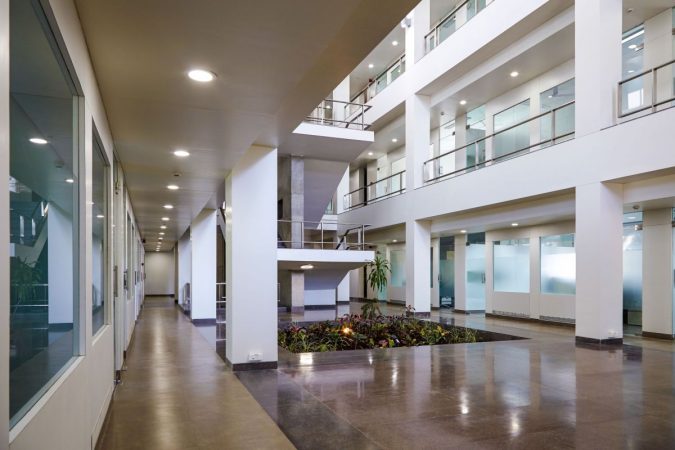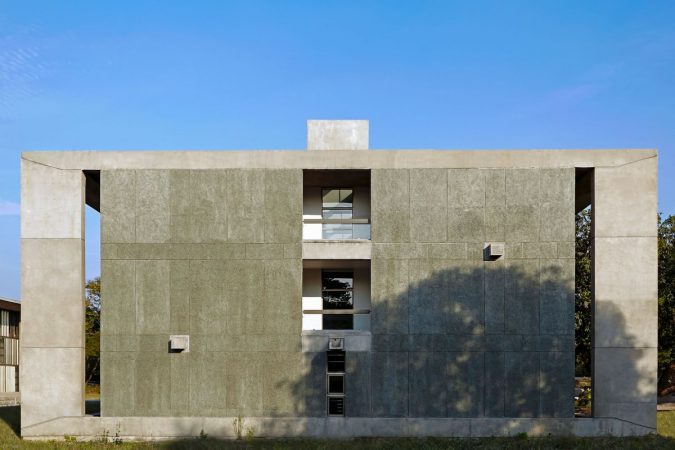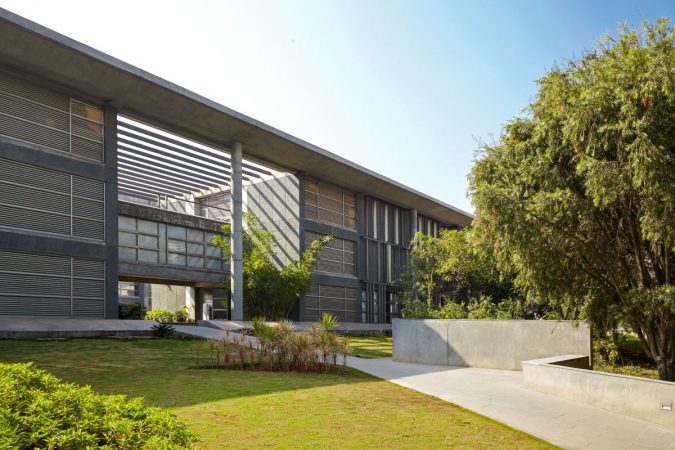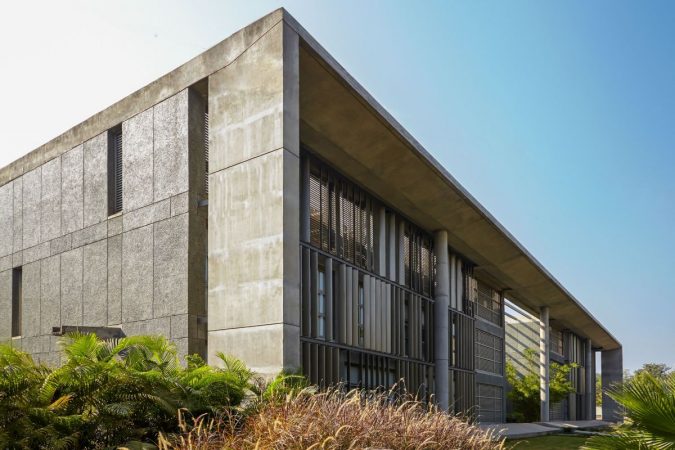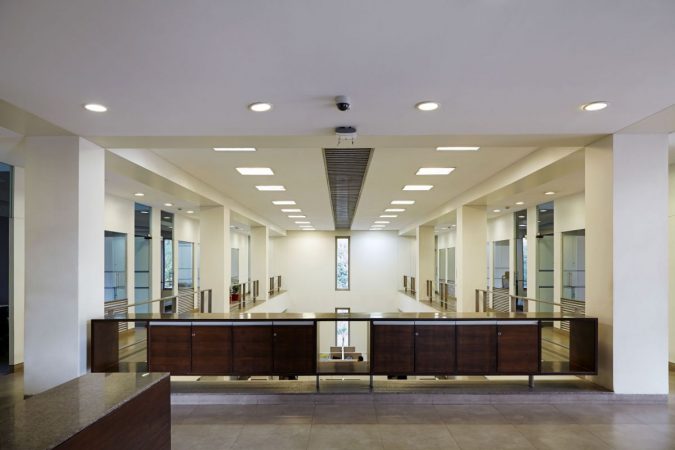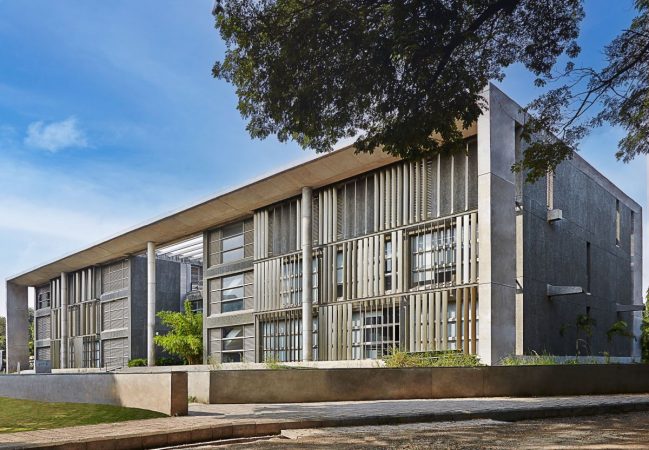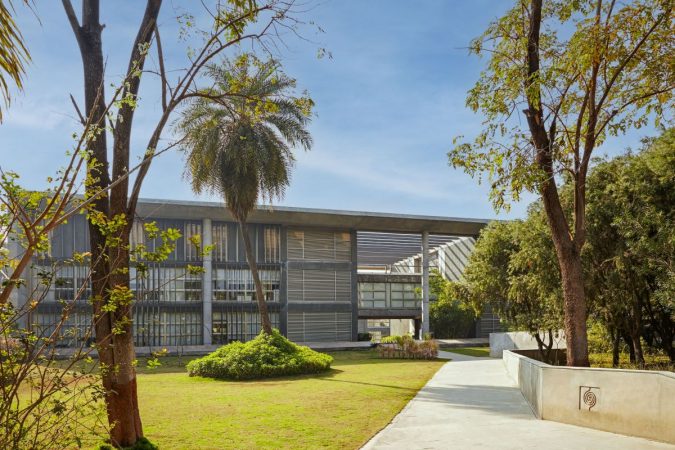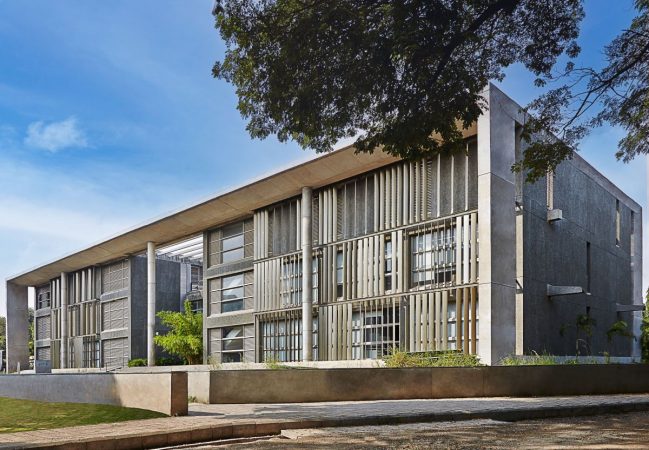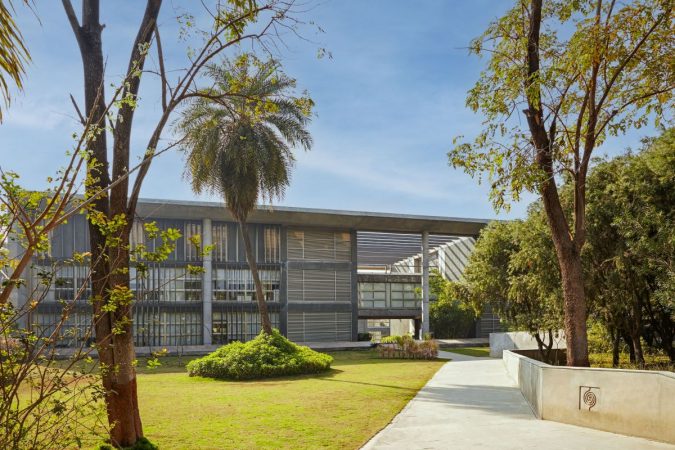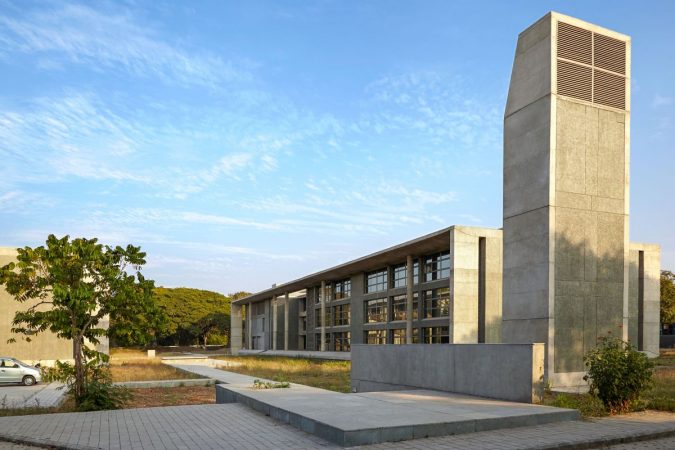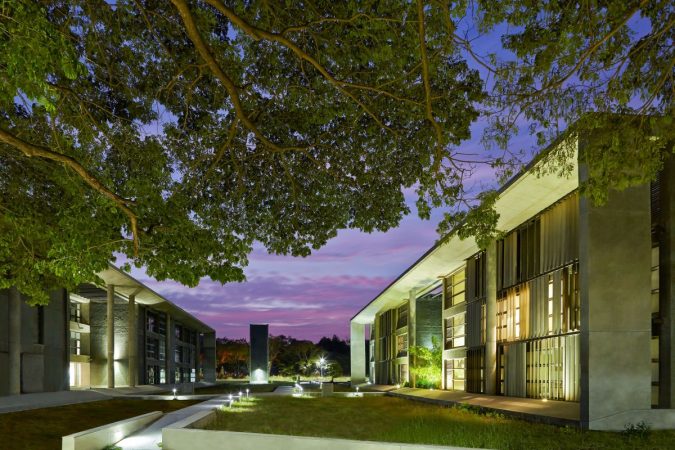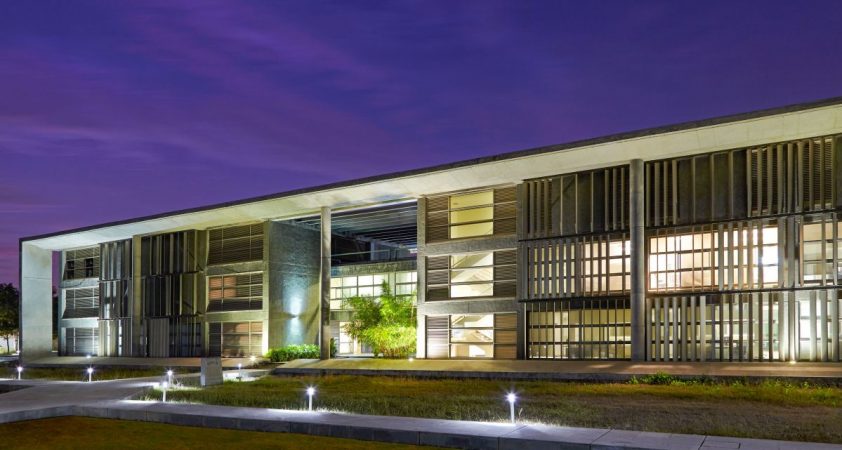Indian Institute of Tropical Meteorology, Pashan, in Pune is conceived as a “precinct” created by two buildings defining a large, shaded plaza in between them, that is synthesized from three considerations: Expressing the functional duality as two separate yet unified blocks, converging the formal vocabulary with that of passive climatic control and lastly, articulating a controlled contemporary expression in response to Pune’s institutional architectural context.
Indian Institute of Tropical Meteorology, Pashan, in Pune is conceived as a “precinct” created by two buildings defining a large, shaded plaza in between them, that is synthesized from three considerations: Expressing the functional duality as two separate yet unified blocks, converging the formal vocabulary with that of passive climatic control and lastly, articulating a controlled contemporary expression in response to Pune’s institutional architectural context.
The High Performance Computer Centre (HPCC) and Centre for Climate Change Research (CCCR) buildings, located on a site belonging to a government institute in Pashan Pune, were designed to be part of an institutional campus, conceived to pioneer research on climate change and allied studies. The facility promotes the urgent need to build a critical mass of trained researchers to address the science related issues of climate change that are of particular relevance to India.The facility provides a network of research groups with state-of-the-art scientific capabilities to generate a large ensemble of future climate change scenarios using super computers with large number crunching capabilities.
To embody the significance of the organization it was important that the built environment responds to the challenges posed by climate change and depleting energy and material resources. The need was to come up with a typology for a workplace that is a low-carbon development with minimal impact on the surroundings. The long and slim blocks are oriented east west to minimize heat gain, to facilitate cross ventilation and to complement the layout of the precinct. The HPCC and CCCR buildings are laid out on a 6-metre by 6-metre modular grid with a connecting bridge and an open-air plaza (“Climate Plaza”) in between. The maximum width of the floor plate, limited to 18 meters, helps in orienting the long facades of the buildings in the north-south direction and reduces heat gain in the building.
DESIGN APPROACH
The project capitalizes on the seasonality of the location. Key concepts were the implementation of strategies for demand reduction and adaptive comfort of the occupants. Solar passive design principles of daylight design and natural ventilation, coupled with low energy systems, were the main design drivers. The micro-climate was modified by reducing the surface of paved areas and the introduction of water bodies on site.
The two buildings are linked by a bridge and an open-air plaza that merges the indoor and outdoor spaces. The HPCC building primarily dealt with solar passive design strategies whereas the CCCR building went a step further to work in conjunction with low energy systems to offset cooling demands. Government institutions have limited budgets and follow a strict regime of fina ncial scrutiny at every stage. No superfluous us items or complicated details that may be avoided are acceptable. A robust design that is minimalistic and low on maintenance was thus conceived. It did away with all applique decoration as a choice and kept a controlled palette of materials to work with.

